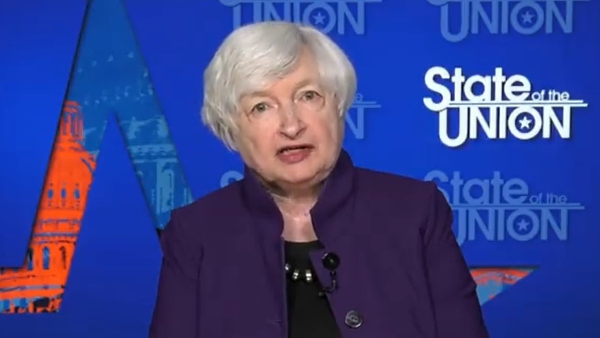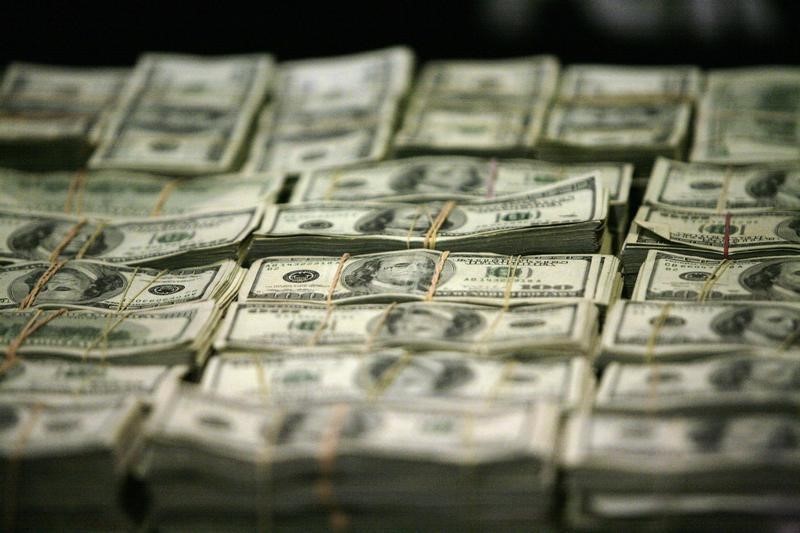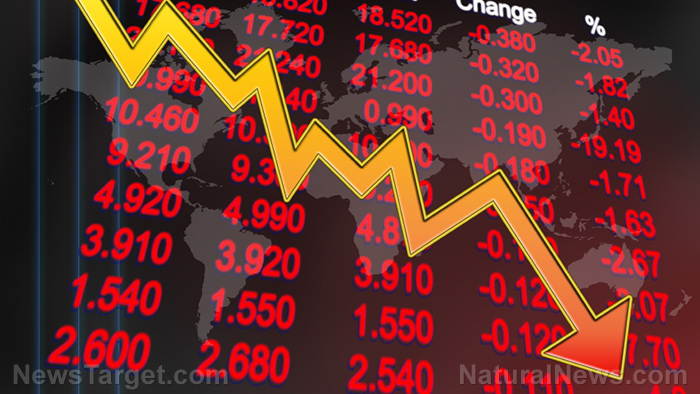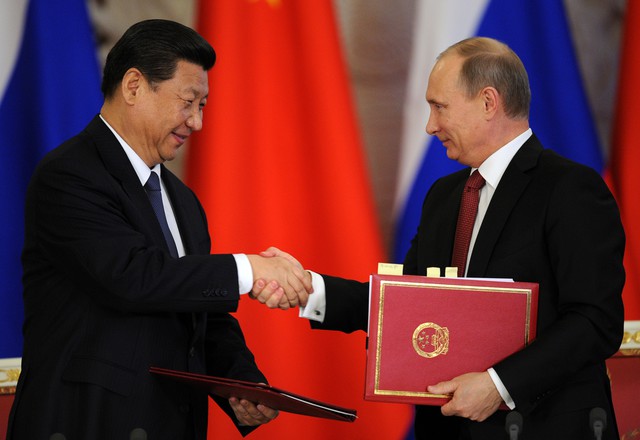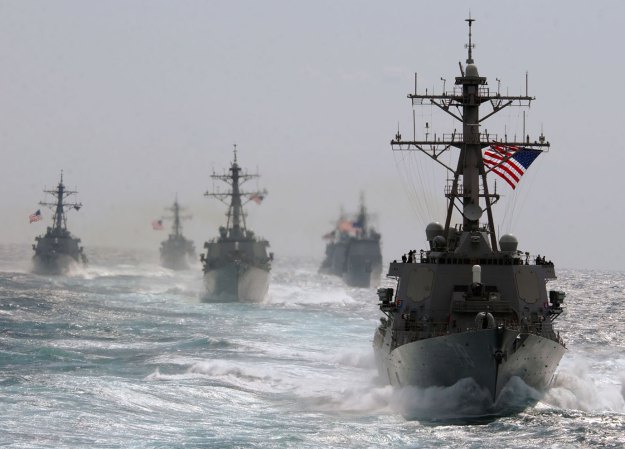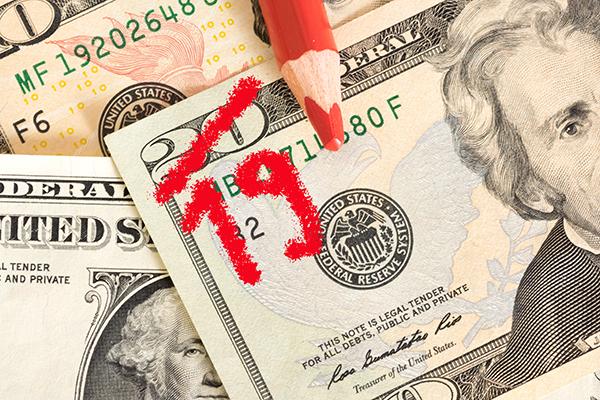Schizophrenic world order: The West is willing to destroy its financial system to punish Russia
03/04/2024 / By News Editors

US Treasury Secretary Janet Yellen has become the latest to add her voice to the growing chorus of Western officials calling for the seizure of Russia’s $300 billion in frozen foreign-exchange reserves for the benefit of Ukraine. This comes after UK Prime Minister Rishi Sunak penned an op-ed over the weekend in which he called for the West to be “bolder” in moving toward confiscating the assets.
(Article by Henry Johnston republished from RT.com)
Notwithstanding the reticence being displayed in some quarters of Europe and various admonitions that such an action would be both blatantly illegal and also detrimental to the integrity of the financial system, the idea seems to be taking on a momentum of its own, particularly in Washington and London.
What we are seeing is a vivid example of the type of thinking that places perceived short-term gains ahead of a commitment to preserve the integrity of an institution that derives its potency precisely from widespread confidence in that integrity. It is also, as we will see, a manifestation of a particular type of paradoxical impulse that arises during times of momentous change.
In this case, the institution in question is the Western-led global financial system, at the very heart of which is the US dollar. Outright confiscation of the Russian central bank reserves that have been immobilized since shortly after the Ukraine conflict began in February 2022 would deliver another jolting blow to the credibility of this system. Even as most of the assets are actually held in Europe, there would be no confusion about who was calling the shots and whose credibility is on the line.
Of course, views differ about how much integrity the dollar-centric system ever had, and certainly the entire Bretton Woods framework established in the waning days of World War II very much served the interests of the victorious Americans. But it cannot be disputed that for decades the dollar was widely viewed across the geopolitical spectrum as not just a market-determined reference point and currency for trade but as a safe store of value. As trade became increasingly liberalized, assumptions about a safe and dependable dollar system were built into all manner of economic and trade policies. Such assumptions became part of the very fabric of the global financial system.
Where risks related to the dollar were understood to exist, they were largely seen as lying in the realm of interest-rate policy – in other words, these were market risks rather than risks inherent to the system itself. A series of emerging-market crises in the 1980s and ‘90s left many countries chastened about the perils of excessive dollar debt and the dangers that US interest-rate hikes can unleash.
But one of the conclusions that many countries drew from these episodes was the necessity of holding greater dollar reserves as a bulwark against shocks. Between 2000 and 2005, right on the heels of two decades of crises often triggered by rising dollar interest rates, emerging markets actually accumulated dollar reserves at a record pace of about $250 billion per annum, or 3.5% of GDP – a level five times higher than in the early 1990s.
In other words, countries responded to shocks emanating from the dollar realm by increasing holdings of dollars. This only underscores the nature of how dollar-related risk was perceived at the time. It simply didn’t occur to anybody that greater exposure to the dollar was itself a risk. The idea that hundreds of billions of dollars’ worth of reserves could simply be confiscated if a country found itself at odds with the overseers of the system didn’t factor into any of the equations.
The weaponization of the dollar in recent years has introduced a heretofore unimagined source of risk. That there is now a political risk premium to using the dollar is already a serious deviation from how the currency was viewed for decades. The consequences of this are already apparent for all to see – the widespread de-dollarization trend – although many in the halls of Western power remain dismissive about what is happening.
But perhaps even more insidious is that those advocating for the seizure of Russia’s reserves have turned on its head a fundamental principle of the entire liberal idea. This is best thought of as a conflation of outcomes and processes. A liberal society or rule-of-law-based system – call it what you want – is held together not because all agree on outcomes and policies, but because there is a consensus on the set of processes and rules by which those outcomes and policies are implemented. The processes and rules do not exist to ensure particular outcomes and, in fact, may produce outcomes that are at odds with the interests of those who preside over those rules.
With the plan to confiscate the Russian assets, what we are seeing is a desired outcome being trumpeted as an act done in defense of the liberal order (punish the liberal-values-stomping Russia and support the liberal-democracy aspirant Ukraine), whereas the integrity of the processes is now entirely secondary. Since the desired outcome does not emerge from any reasonable application of existing processes, what is being sought is a radically different interpretation of those processes. When Western officials call for finding “a legal way” to confiscate the assets, what they really mean is that the outcome is paramount and that any legal fig leaf will do.
To put it plainly, the liberal order is no longer being defended by an appeal to its deeper principles but by efforts to advocate outcomes that superficially seem to advance its interests – even if those outcomes emerge from a distinctly illiberal approach.
When this extremely critical distinction undergoes corrosion – as is happening now – the challenge is to see the deeper change not in terms of a different outcome but in terms of a transformation of the processes that produce the outcome. For quant geeks, think of it in terms of statistical process control, where one tries to determine whether or not a process has remained within specs or has undergone some sort of shift.
The 20th century Spanish philosopher Jose Ortega y Gasset described the rise to prominence in Western civilization of a certain type of person who takes for granted the institutions he has inherited and presides over, enjoying their benefits while giving scarce thought to how these institutions arose and what must be done to maintain them. Ortega likened such a person to a spoiled child or a hereditary aristocrat. Ignorant of the fragility of his inheritance and supremely confident in himself, he inevitably ushers in a degradation of the very institutions he has been entrusted with.
Such is the essence of the current crop of Western leaders, particularly those in Washington. Born mostly in the decades immediately following World War II, they take as a given the supremacy of the liberal, rules-based order and its economic wing – the dollar-based financial system. They speak of this world order not with reverence and a deep understanding of its roots but in emotionally laded yet vacuous cliches. While benefitting themselves greatly from the liberal order, they show little interest in the actual principles that purport to underpin it. They invoke it constantly, but mostly in order to bludgeon various foes and adversaries.
A recent op-ed in the New York Times by Bret Stephens titled ‘How Biden Can Avenge Navalny’s Death’ listed seizing Russia’s $300 billion in frozen funds as a potential avenue for making good on a warning Biden gave to Russian President Vladimir Putin in 2021 of “devastating” consequences should the opposition leader die in prison.
Stephens does mention concerns that such a move could trigger flight from the dollar, but concludes that such an argument “might otherwise be persuasive if the need to save Ukraine and punish Russia weren’t more urgent.” In other words, the very dollar system that the US relies on for what’s left of its prosperity can be sacrificed at the altar of the symbolic gesture of, as Stephens puts it, pursuing “the strategic imperative of demonstrating to a dictator that American threats aren’t hollow.”
Janet Yellen, a paladin of the liberal global order if there ever was one, was dismissive in recent comments of the threats that seizing Russia’s reserves would pose to the system itself. It is “extremely unlikely” that tapping the funds would harm the dollar’s standing because “realistically there are no alternatives,” she believes. For Yellen, her support marks an about-face from her earlier view that such a move was “not legally permissible in the United States.” But the winds have now changed and the legal case is apparently looking more promising.
Such is the prevailing insouciance among the ruling class. Like a soon-to-be-deposed king who takes for granted the permanence of the monarchy, today’s leaders simply cannot contemplate at any depth what constitutes the true foundation of the system they preside over.
But there is something else at play. It bears recalling what has animated the discussion of seizing Russia’s assets in recent weeks in the first place: it is the panic setting in over the drying up of funding for the clearly failing Ukraine proxy war against Russia. In other words, notwithstanding the self-assured tones from the likes of Yellen, the plan has not emerged from a place of strength. The willingness to take such a dangerous step for very short-term aims (putting aside the question of whether $300 billion can even save the West’s Ukraine project) can be seen as akin to burning the furniture as a last resort to stay warm – it reeks of desperation.
Thus we can say that the type of thinking driving the push to seize the Russian assets derives from the self-assuredness about which Ortega speaks but also from a burgeoning anxiety. The former is due to Western leaders’ apparent belief in the indestructability of the institutions that they are actually undermining; the latter because they are facing a cascade of crises and are increasingly frantic in seeking stopgap solutions at whatever long-term cost.
The inversion of outcomes and processes that we spoke of earlier is another manifestation of this essentially schizophrenic mindset. There is a belief that the system can withstand such blows to its integrity: assets can be stolen and rules subverted but the dollar will always be on top. And yet the act of subordinating processes to outcomes is itself a reflection of a fear that the system is too fragile to withstand undesirable outcomes. If Russia retaining possession of its $300 billion in reserves is an outcome too dangerous for the liberal order to survive, then things are in bad shape.
These two seemingly irreconcilable traits – self-assuredness and deep anxiety – are often found coexisting among those in positions of power who are trying to cling on to the status quo during times of epochal change. It is what drove the arrogant and clueless Romanian leader Nicolae Ceausescu to call a large rally in Bucharest in 1989 that would prove to be his final undoing. Historians may very well look back at the arrogant and clueless Janet Yellens and Rishi Sunaks as caught up in historical processes that they could neither comprehend nor control.
Read more at: RT.com
Submit a correction >>
Tagged Under:
big government, bubble, chaos, conspiracy, currency crash, currency reset, dedollarization, dollar demise, economic collapse, economic riot, fascism, finance riot, financial collapse, frozen assets, g7, insanity, Janet Yellen, market crash, money supply, national security, Rishi Sunak, risk, Russia, Russia-Ukraine war, stupid, twisted, tyranny, Us Dollar, World War III
This article may contain statements that reflect the opinion of the author
RECENT NEWS & ARTICLES
COPYRIGHT © 2023 DeDollarization.news
All content posted on this site is protected under Free Speech. DeDollarization.news is not responsible for content written by contributing authors. The information on this site is provided for educational and entertainment purposes only. It is not intended as a substitute for professional advice of any kind. DeDollarization.news assumes no responsibility for the use or misuse of this material. All trademarks, registered trademarks and service marks mentioned on this site are the property of their respective owners.

